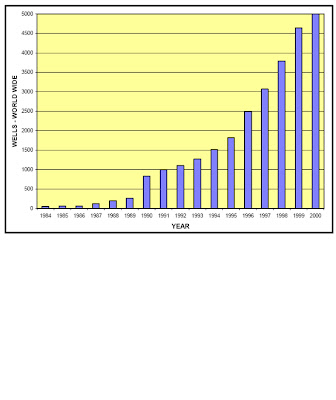WOB
(Weight On Bit)
Conventional bit weight for
efficient drilling is about 2000-5000 lbf per inch of bit diameter.
Motor assemblies are more efficient with bit weight less than rotary assemblies.
Bit weight may be increased by reducing drag and torque and by using the split assembly .
Torque
and Drag
- Drag is a force restricting the movement of the drill tools
in directions parallel to the well path. - Torque is the force resisting rotation movement.
- Excess drag and torque cause directional-drilling problems especially in turning and horizontal sections in horizontal well.
- Reducing drill string weight reduces drag and torque at high quality of mud with good chemical and physical properties that are essential.
- Oil base mud should be considered for more demanding situation because its good lubricating qualities.
Hole
Cleaning
- A particular problem that arises in drilling horizontal wells is the difficulty of the removing the rock cuttings from the horizontal section of the well.
- The source of the problem is that cuttings tend to settle in the bottom of the hole and allow mud to pass above without transporting them.
- High fluid velocities and polymer muds are commonly used for efficient hole cleaning and minimizing formation damage.
- Also, these can be good reason to use oil-based muds to control shale swelling.
Water
Sensitive Shale
- Shale layers frequently tend to collapse in contact with fresh water This can be prevented by using oil-based drilling fluids.
- These fluids usually consist of an advent emulsions of water in diesel oil together with other additives.
- Fluids of this type have been used in the North Sea.
- Water-based muds can be inhibited to reduce the attack in water-sensitive shales by the addition of NaCl or CaCl2.
- These additives reduce the chemical activity of the water and its tendency to penetrate into the water-sensitive shale.
- Inhibited water-based muds are not as effective as oil-based muds for the protection of shales, but they are cheaper and less damaging environmentally.
Directional
Control
- Overcoming the force of gravity is a fundamental problem in directional and horizontal drilling.
- BHA includes bits,motor,non-magnetic drill collar and MWD tool
- BHA section controls the hole trajectory but does not contribute to WOB.
- This section should be kept as lightweight as possible to minimize torque and drag.


































